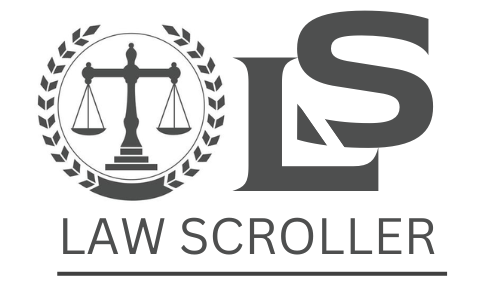You might wonder: “Why should I care about some real estate firm’s lawsuit?” The short answer is: if you invested in one of Ashcroft Capital’s offerings, or you’re considering doing so, the outcome could affect your money. Lawsuits like this also influence how real estate syndicators operate, how transparent they must be, and whether investors can recover losses. So even if you’re not directly involved (yet), this case may set precedents in the space.
Background: What Is the Ashcroft Capital Lawsuit?

Who (or what) is Ashcroft Capital?
Ashcroft Capital is a real estate investment firm, often operating in the multifamily (apartment complexes) space. They raise capital from investors to buy, manage, and improve properties, then share the profits (or losses).
What are the claims / what’s the lawsuit about?
The lawsuit centers on allegations by investors that Ashcroft Capital made misleading promises, mismanaged funds, and failed to disclose risks properly. Some specific allegations include:
- Inflated or unrealistic projected returns — investors say the forecasts given to them didn’t match what the market could reasonably support.
- Non-disclosure or hiding of financial risks or problems (e.g. occupancy, expenses) that should have been disclosed.
- Misuse or diversion of investor funds — in other words, investors claim that their money was used for purposes not told to them.
- Breach of fiduciary duty — that Ashcroft owed its investors certain duties (loyalty, care) and allegedly violated them.
One version of the case is Cautero v. Ashcroft Legacy Funds, filed in February 2025, where the plaintiffs allege investor losses of over $18 million.
Note: As of now, there is no confirmed public record of a completed payout. Some sources suggest that Ashcroft Capital has denied wrongdoing and that any settlement would come without admission of liability.
Who’s Affected / Who Can Claim
If you want to know whether you might be part of a “payout” or recovery from this lawsuit, here are the likely groups:
- Accredited investors (or others) who invested in one or more Ashcroft Capital deals, especially those included in the lawsuit’s class or plaintiffs’ group.
- People who relied on Ashcroft’s projections or marketing materials — if you claim you were misled, that may be your entry into a claim.
- Investors in “Legacy Funds” or specific projects named in the lawsuit (for example, as in Cautero v. Ashcroft Legacy Funds) who experienced losses.
- Those who elect to join the class or cause of action (if a class is certified) — sometimes people must affirmatively opt in or file a claim.
- Potential future investors or creditors — though they generally cannot claim past wrongdoing, the decision could affect contract terms, disclosures, and risk standards in future deals.
If you invested with Ashcroft or were presented with investment materials, it’s worth reviewing whether your deal is in the public lawsuit or whether you’ve received notice.
Timeline: Key Events (What We Know So Far)
- February 2025 — The lawsuit Cautero v. Ashcroft Legacy Funds is filed, alleging more than $18 million in damages to investors.
- By mid-2025 — Public discussion and media reports intensify, with websites covering the case, investor concerns, and legal analysis.
- As of mid-2025 — No public confirmation of a payout is known; Ashcroft Capital has not (publicly) admitted to any liability.
- Ongoing — Legal proceedings (motions to dismiss, discovery, negotiation) are expected. Settlements or judgments may be proposed or contested.
Because the case is recent and still developing, many of the key steps (motions, court rulings) are still ahead.
What’s At Stake: What Could Be Lost or Gained
Here’s what might be on the line in the Ashcroft Capital lawsuit payout:
- Money recovery — investors hope to recover some or all of what they lost (or a portion), possibly via settlement or court judgment.
- Investor confidence / reputation — how this case turns out may affect how much trust people place in Ashcroft and similar firms in future deals.
- Precedent for disclosures in real estate syndications — if courts impose stricter standards (for disclosures, audits, fund use), that could benefit future investors broadly.
- Legal costs and delays — litigation is expensive, slow, and uncertain. Even if a payout is reached, time, attorneys’ fees, and appeals could reduce actual earnings.
- No admission of liability — many settlements are structured so the defendant doesn’t formally admit wrongdoing; that limits how you can use the decision in other claims.
- Partial or zero recovery — courts could dismiss some claims, reduce damages, or deny relief if the evidence is weak or defenses succeed.
So, it’s possible investors recover something — or very little — depending on how strong the case is, how much evidence exists, and how the parties negotiate.
What to Watch Next (Case Update & What Comes Next)
- Motions to dismiss — Ashcroft or its legal team may challenge the lawsuit on legal grounds (e.g. that the plaintiffs didn’t state a legally valid claim).
- Discovery — If the case survives early motions, both sides exchange documents, depositions, and evidence. That’s where internal records, emails, and financials will come into play.
- Settlement talks — At many stages, parties try to settle to avoid trial costs. Keep an eye out for announcements of “proposed settlement” or “class action settlement.”
- Class certification or class notice — If the court certifies a class, people eligible will receive notice and instructions to participate.
- Deadlines / claim forms — If a settlement is approved, claimants often have to submit forms or opt in by a date.
- Final judgment or verdict / appeals — If the case goes to trial, the outcome may be appealed.
If you’re an investor or potential claimant in Ashcroft’s deals, you’ll want to watch court dockets, legal notices, or investor communications for updates about deadlines and how to submit a claim.
FAQs: (Ashcroft Capital Lawsuit Payout)
Q1: Am I eligible to receive a payout?
If you invested in one of the Ashcroft Capital deals included in the lawsuit (for example, in the “Legacy Funds” named in Cautero) or your investment matches the class definition (once certified), you may be eligible. You’ll need to check lawsuit notices or legal filings to see if your specific deal is covered.
Q2: Do I need a lawyer?
You don’t always need one if you’re just submitting a claim in a class settlement. But having an attorney with securities or real estate litigation experience can help you evaluate whether opting out, objecting, or negotiating separately is worthwhile.
Q3: When will the case be decided or the payout happen?
That’s unclear. It could be months to years. First there are procedural motions, discovery, settlement talks, and possibly a trial and appeals. The pace depends on how contested the case is and how cooperative the parties are.
Q4: What if a settlement is offered — do I have to accept it?
No — if you’re in a class, you typically have the choice to accept (submit a claim), opt out to pursue your own claim, or object. You’ll have to weigh what the offer gives versus what you might lose or gain by going it alone.
Q5: What if I miss a deadline to file a claim?
You may lose the right to participate in the payout. In many cases, courts strictly enforce deadlines (“bar dates”). That’s why watching for notices is crucial.
Q6: Could Ashcroft win / avoid payout completely?
Yes. If the court dismisses key claims, or the defense successfully rebuts the allegations, investors might not recover anything. Even if a payout is ordered, it may be reduced, delayed, or tied up in appeals.
If you feel you might be part of a claim (or you just want to track this as an investor), I suggest:
- Keep an eye on legal notices or court dockets involving Cautero v. Ashcroft Legacy Funds or other Ashcroft Capital investor suits.
- Document your investment history, communications, performance statements you relied on.
- Consider consulting a securities or real estate litigation attorney to understand your rights, especially before opting out or objecting to a settlement.

 Oliver Johnson is LawScroller’s Senior Legal Correspondent specializing in civil litigation, class actions, and consumer lawsuit coverage. He breaks down complex settlements and court decisions into clear, practical guidance for readers.
Oliver Johnson is LawScroller’s Senior Legal Correspondent specializing in civil litigation, class actions, and consumer lawsuit coverage. He breaks down complex settlements and court decisions into clear, practical guidance for readers.